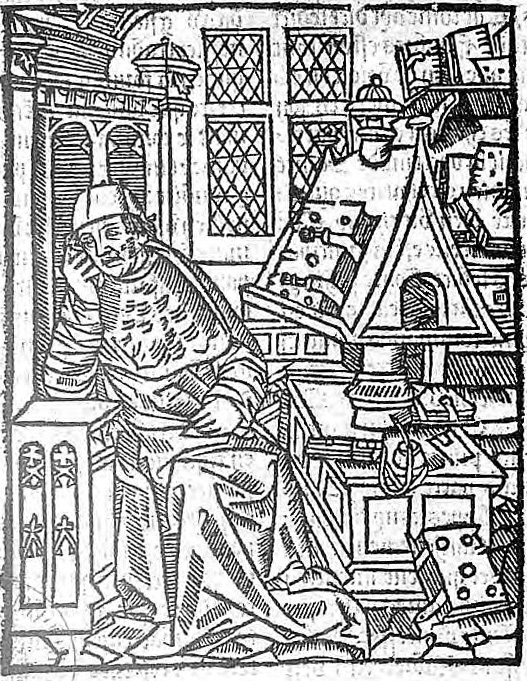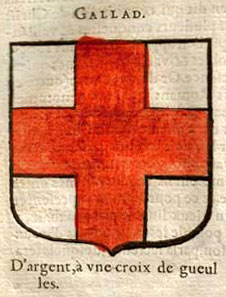|
Perceval
Percival (, also spelled Perceval, Parzival), alternatively called Peredur (), was one of King Arthur's legendary Knights of the Round Table. First mentioned by the French author Chrétien de Troyes in the tale ''Perceval, the Story of the Grail'', he is best known for being the original hero in the quest for the Grail, before being replaced in later English and French literature by Galahad. Etymology and origin The earliest reference to Perceval is in Chrétien de Troyes's first Arthurian romance ''Erec et Enide'', where, as "Percevaus li Galois" (Percevaus of Wales), he appears in a list of Arthur's knights; in another of Chrétien's romances, '' Cligés'', he is a "renowned vassal" who is defeated by the knight Cligés in a tournament. He then becomes the protagonist in Chrétien's final romance, ''Perceval, the Story of the Grail''. In the Welsh romance '' Peredur son of Efrawg'', the figure goes by the name Peredur. The name "Peredur" may derive from Welsh ''par'' (s ... [...More Info...] [...Related Items...] OR: [Wikipedia] [Google] [Baidu] |
Perceval, The Story Of The Grail
''Perceval, the Story of the Grail'' (french: Perceval ou le Conte du Graal) is the unfinished fifth verse romance by Chrétien de Troyes, written by him in Old French in the late 12th century. Later authors added 54,000 more lines in what are known collectively as the Four Continuations,Grigsby, John L. (1991). "Continuations of ''Perceval''". In Norris J. Lacy, ''The New Arthurian Encyclopedia'', pp. 99–100. New York: Garland. . as well as other related texts. ''Perceval'' is the earliest recorded account of what was to become the Quest for the Holy Grail but describes only a golden grail (a serving dish) in the central scene, does not call it "holy" and treats a lance, appearing at the same time, as equally significant. ''Perceval'' ''Perceval'' is dedicated to Chrétien's patron Philip I, Count of Flanders.Lacy, Norris J. (1991). "Chrétien de Troyes". In Norris J. Lacy, ''The New Arthurian Encyclopedia'', pp. 88–91. New York: Garland. . It was written in Old French ... [...More Info...] [...Related Items...] OR: [Wikipedia] [Google] [Baidu] |
Knights Of The Round Table
The Knights of the Round Table ( cy, Marchogion y Ford Gron, kw, Marghekyon an Moos Krenn, br, Marc'hegien an Daol Grenn) are the knights of the fellowship of King Arthur in the literary cycle of the Matter of Britain. First appearing in literature in the mid-12th century, the Knights are an order dedicated to ensuring the peace of Arthur's kingdom following an early warring period, entrusted in later years to undergo a mystical quest for the Holy Grail. The Round Table at which they meet is a symbol of the equality of its members, who range from sovereign royals to minor nobles. The various stories in the cycle present an assortment of knights from all over Great Britain and abroad, some of whom are even from outside of Europe. Their ranks often include Arthur's close and distant relatives, such as Agravain and Gaheris, as well as his reconciled enemies and those he defeated in battle, including Galehaut and Lot. Several of the most notable knights, including Bediver ... [...More Info...] [...Related Items...] OR: [Wikipedia] [Google] [Baidu] |
Holy Grail
The Holy Grail (french: Saint Graal, br, Graal Santel, cy, Greal Sanctaidd, kw, Gral) is a treasure that serves as an important motif in Arthurian literature. Various traditions describe the Holy Grail as a cup, dish, or stone with miraculous healing powers, sometimes providing eternal youth or sustenance in infinite abundance, often guarded in the custody of the Fisher King and located in the hidden Grail castle. By analogy, any elusive object or goal of great significance may be perceived as a "holy grail" by those seeking such. A "grail" (Old French: ''graal'' or ''greal''), wondrous but not unequivocally holy, first appears in '' Perceval, the Story of the Grail'', an unfinished chivalric romance written by Chrétien de Troyes around 1190. Chrétien's story inspired many continuations, translators and interpreters in the later-12th and early-13th centuries, including Wolfram von Eschenbach, who perceived the Grail as a stone. The Christian, Celtic or possibly other o ... [...More Info...] [...Related Items...] OR: [Wikipedia] [Google] [Baidu] |
Chrétien De Troyes
Chrétien de Troyes (Modern ; fro, Crestien de Troies ; 1160–1191) was a French poet and trouvère known for his writing on Arthurian subjects, and for first writing of Lancelot, Percival and the Holy Grail. Chrétien's works, including '' Erec and Enide'', '' Lancelot'', '' Perceval'' and '' Yvain'', represent some of the best-regarded of medieval literature. His use of structure, particularly in ''Yvain'', has been seen as a step towards the modern novel. Life Little is known of his life, but he seems to have been from Troyes or at least intimately connected with it. Between 1160 and 1172 he served (perhaps as herald-at-arms, as Gaston Paris speculated) at the court of his patroness Marie of France, Countess of Champagne, daughter of King Louis VII and Eleanor of Aquitaine, who married Count Henry I of Champagne in 1164. Later, he served the court of Philippe d'Alsace, Count of Flanders. Works Chrétien's works include five major poems in rhyming eight-syllable ... [...More Info...] [...Related Items...] OR: [Wikipedia] [Google] [Baidu] |
Percival's Sister
Percival's sister is a role of two similar but distinct characters in the Holy Grail stories within the Arthurian legend featuring the Grail hero Percival (Perceval). The first of them is named Dindrane, the second is usually unnamed and is known today as the Grail heroine. Dindrane Dindrane (or ''Dandrane'', ''Danbrann'', ''Dandrenor'', ''Dindraine'', etc.) is a character in the Old French romance '' Perlesvaus, or The High Book of the Holy Grail'', an anonymous prose altered adaptation of (and a sequel to) Chrétien de Troyes' unfinished poem ''Perceval, the Story of the Grail''. A sister of King Arthur's knight Percival, who rescues her from an evil bride kidnapper, Dindrane lives out her days as a maiden in the Grail Castle, together with her brother (Percival) and mother. The latter is Yglais, herself a sister of King Pelles and widow of Alain "the Large", lord of the valley and castle of Kamaalot (Camelot). The pre-cyclic version of the Prose ''Lancelot'' names her Helia ... [...More Info...] [...Related Items...] OR: [Wikipedia] [Google] [Baidu] |
Peredur Son Of Efrawg
''Peredur son of Efrawg'' is one of the Three Welsh Romances associated with the ''Mabinogion''. It tells a story roughly analogous to Chrétien de Troyes' unfinished romance ''Perceval, the Story of the Grail'', but it contains many striking differences from that work, most notably the absence of the French poem's central object, the grail. Synopsis The central character of the tale is Peredur, son of Efrawg (''York''). As in Chrétien's ''Percival'', the hero's father dies when he is young, and his mother takes him into the woods and raises him in isolation. Eventually, he meets a group of knights and determines to become like them, so he travels to the court of King Arthur. There he is ridiculed by Cei and sets out on further adventures, promising to avenge Cei's insults to himself and those who defended him. While travelling, he meets two of his uncles. The first (playing the role of ''Percivals Gornemant) educates him in arms and warns him not to ask the significance o ... [...More Info...] [...Related Items...] OR: [Wikipedia] [Google] [Baidu] |
King Arthur
King Arthur ( cy, Brenin Arthur, kw, Arthur Gernow, br, Roue Arzhur) is a legendary king of Britain, and a central figure in the medieval literary tradition known as the Matter of Britain. In the earliest traditions, Arthur appears as a leader of the post-Roman Britons in battles against Saxon invaders of Britain in the late 5th and early 6th centuries. He appears in two early medieval historical sources, the '' Annales Cambriae'' and the '' Historia Brittonum'', but these date to 300 years after he is supposed to have lived, and most historians who study the period do not consider him a historical figure.Tom Shippey, "So Much Smoke", ''review'' of , ''London Review of Books'', 40:24:23 (20 December 2018) His name also occurs in early Welsh poetic sources such as '' Y Gododdin''. The character developed through Welsh mythology, appearing either as a great warrior defending Britain from human and supernatural enemies or as a magical figure of folklore, sometimes assoc ... [...More Info...] [...Related Items...] OR: [Wikipedia] [Google] [Baidu] |
Matter Of Britain
The Matter of Britain is the body of medieval literature and legendary material associated with Great Britain and Brittany and the legendary kings and heroes associated with it, particularly King Arthur. It was one of the three great Western story cycles recalled repeatedly in medieval literature, together with the Matter of France, which concerned the legends of Charlemagne, and the Matter of Rome, which included material derived from or inspired by classical mythology. History The three "Matters" were first described in the 12th century by French poet Jean Bodel, whose epic ' ("Song of the Saxons") contains the line: The name distinguishes and relates the Matter of Britain from the mythological themes taken from classical antiquity, the " Matter of Rome", and the tales of the Paladins of Charlemagne and their wars with the Moors and Saracens, which constituted the "Matter of France". King Arthur is the chief subject of the Matter of Britain, along with stories rela ... [...More Info...] [...Related Items...] OR: [Wikipedia] [Google] [Baidu] |
Peredur
Peredur (, Old Welsh ''Peretur'') is the name of a number of men from the boundaries of history and legend in sub-Roman Britain. The Peredur who is most familiar to a modern audience is the character who made his entrance as a knight in the Arthurian world of Middle Welsh prose literature. Gwrgi and Peredur, sons of Eliffer Gwrgi and Peredur are listed as sons of Eliffer (Old Welsh: ''Elidir'' or ''Eleuther'') "of the great warband" (''cascord maur'') and as sons of the Coeling dynasty in the Harleian genealogies, making them first cousins of Urien.Koch, "Peredur fab Efrawg", pp. 1437–8. Likewise, a pedigree from Jesus College MS 20 includes Gwrgi and Peredur as brothers together with one Arthur ''penuchel''. Their principal claim to fame rests on their having fought in the Battle of Arfderydd. The '' Annales Cambriae'' report that this battle (''bellum Armterid'') was fought in 573, but gives no further detail.Koch, "Arfderydd", pp. 82–3. A later expansion of the ... [...More Info...] [...Related Items...] OR: [Wikipedia] [Google] [Baidu] |
Galahad
Sir Galahad (), sometimes referred to as Galeas () or Galath (), among other versions of his name, is a knight of King Arthur's Round Table and one of the three achievers of the Holy Grail in Arthurian legend. He is the illegitimate son of Sir Lancelot du Lac and Lady Elaine of Corbenic and is renowned for his gallantry and purity as the most perfect of all knights. Emerging quite late in the medieval Arthurian tradition, Sir Galahad first appears in the Lancelot–Grail cycle, and his story is taken up in later works, such as the Post-Vulgate Cycle, and Sir Thomas Malory's '' Le Morte d'Arthur''. Origins The story of Galahad and his quest for the Holy Grail is a relatively late addition to the Arthurian legend. Galahad does not feature in any romance by Chrétien de Troyes, or in Robert de Boron's Grail stories, or in any of the continuations of Chrétien's story of the mysterious castle of the Fisher King. He first appears in a 13th-century Old French Arthurian epic, t ... [...More Info...] [...Related Items...] OR: [Wikipedia] [Google] [Baidu] |

.jpg)



_Peredur.jpg)

